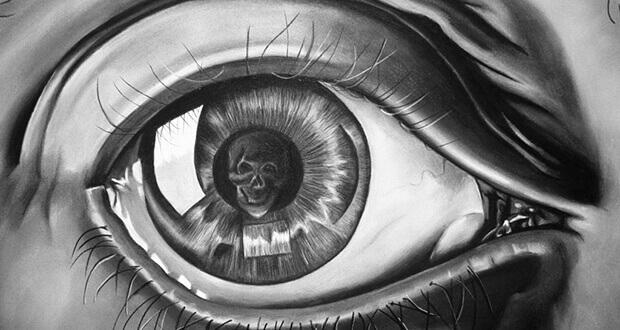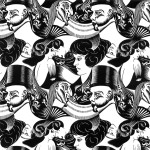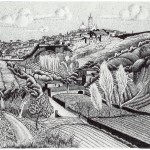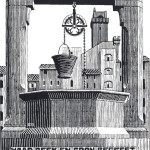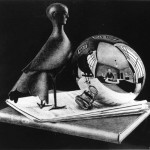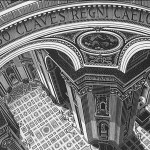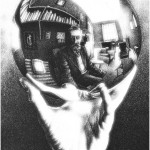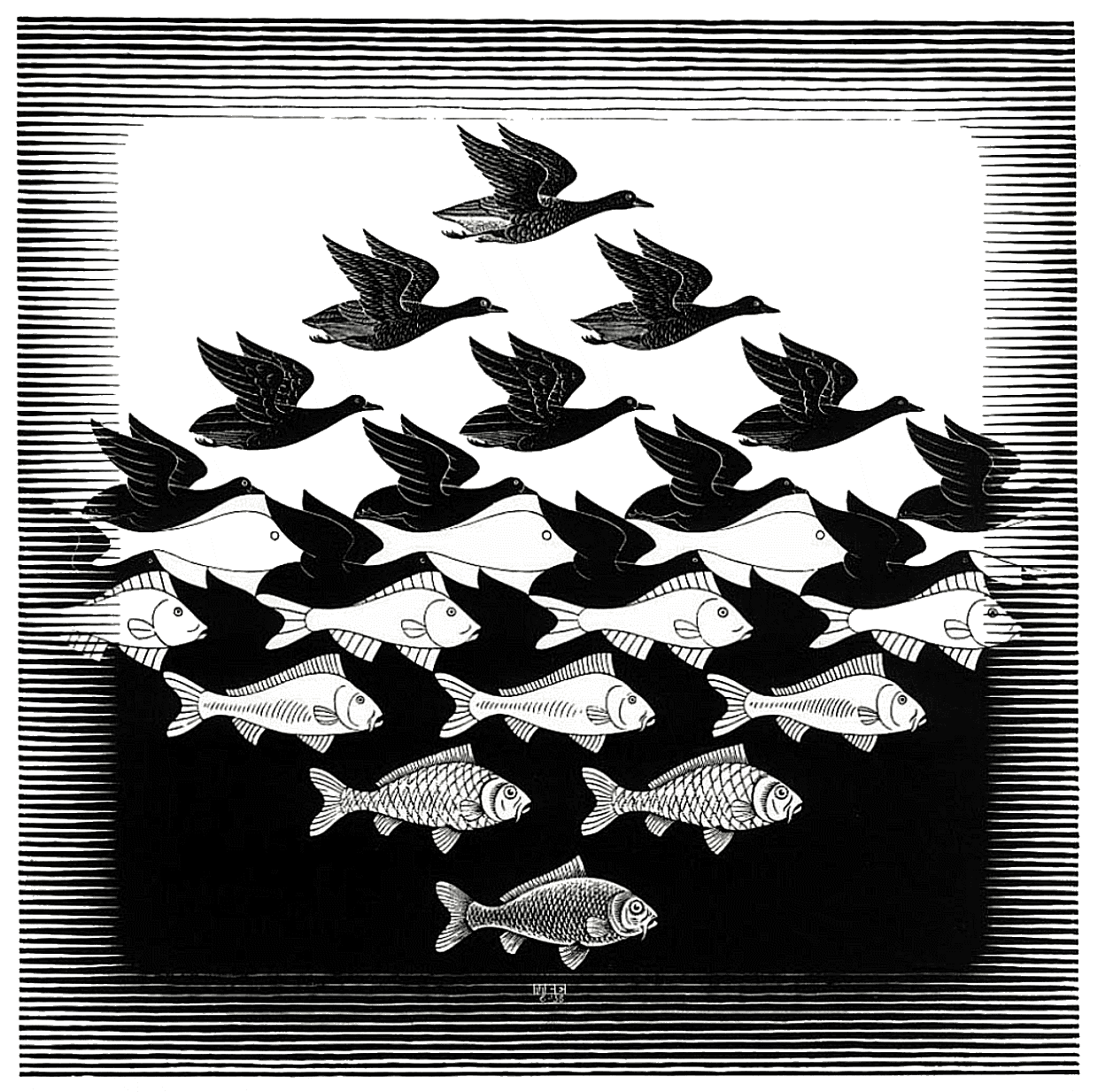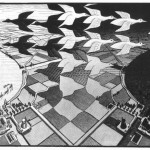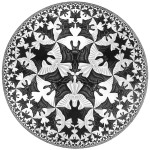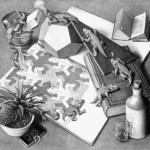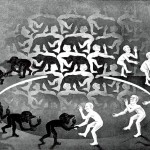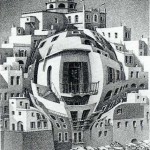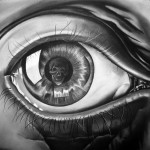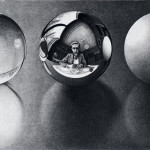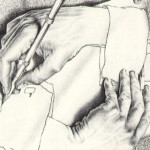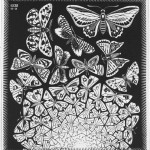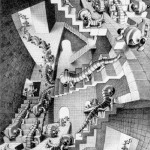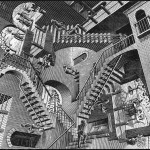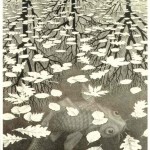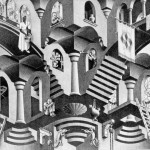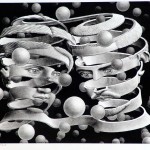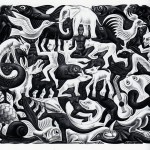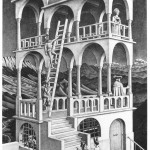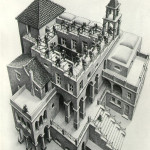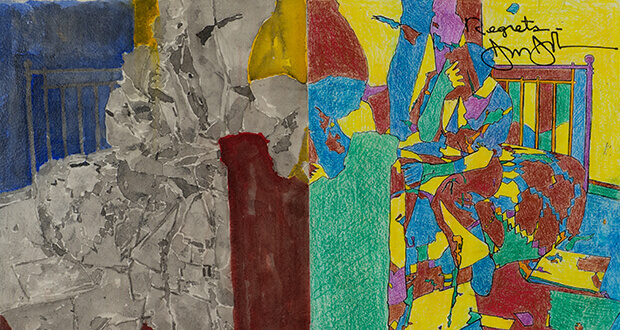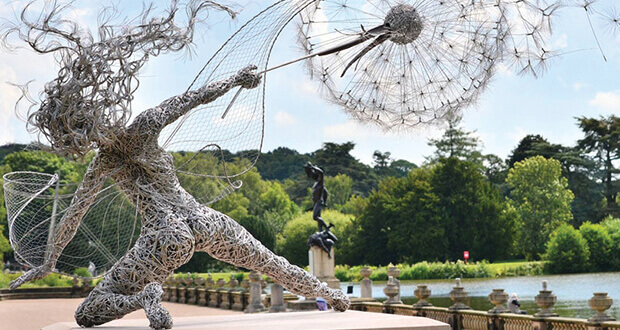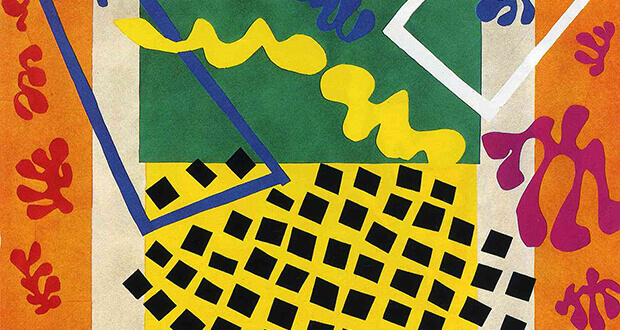Chiostro del Bramante, Rome
from September 20, 2014 to February 22, 2015
“We don’t know space – says Escher – we don’t see it, we don’t listen to it, we don’t perceive it. We are immerse in it, we belong to it, but we don’t know anything about it…We just see paths, signs; we can’t see the real space”. His drawings are provocations created by the artist to get our perception of space sharper, to unveil boundaries and the ambiguity of our cognitive and perceptive abilities”
Admire his incredible works leave a sense of astonishment in visitor’s eyes. Maurits Cornelis Escher (1898 – 1972) was a Dutch graphic artist and engraver. He is best known for woodcuts, lithographs and halftone that tend to present impossible constructions, explorations of infinity, tessellations of plane and space. His works are constantly in becoming, a “metamorphoses,” in which shapes changed and interacted with each other, and sometimes even broke free of the plane itself.
Escher’s art is permeated by math and his fantasy worlds are drawn and designed in relation with impossible objects. He blends different theories and gives it back with tactic solutions of impossible and impracticable architectures: in his surreal visions the sky is, at the same time, also the water, a duck is a fish, a simple blank page can show all the wonderful things we have in real world.
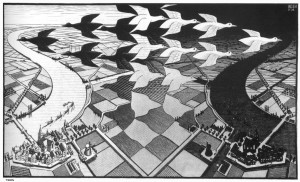
Drawing is a sort of illusion. This is the effect Escher wants to create. His winning stratagem is to apply the fascinating laws of visual perception, creating visual phenomena and optical illusions. “When an observer views a two-dimensional figure on paper, he often interprets it as a three-dimensional object”.(Escher)
Escher’s “impossible drawing” relies on the brain’s insistence upon using visual clues to construct a three-dimensional object from a two-dimensional representation, and he created many works which address this type of anomaly: drawings, lithographs, woodcuts, and mezzotints.
The exhibition tells the story of Escher, his artistic path in comparison with his trip abroad, sources of inspiration for his works. For example, his trip to Alhambra in Grenada, caught his attention to tessellations applied to natural shapes, like animal figures. He adopted this new technique to create a new way of drawing. Escher innovation consists on apply math and geometrical laws to art, creating tessellations, geometrical transition, areas, no Euclidean laws and space geometry.
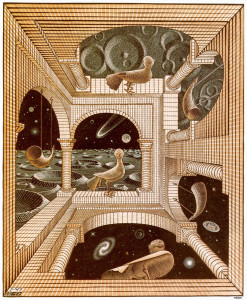
Mathematicians and scientists defines Escher as the alchemist of art: if art has the possibility to create emotions and shows us the natural beauty of the familiar ingredients of ordinary life, Escher manages to add energy and enthusiasm to our common objects, opening the door of imagination, connecting with the deepest and spiritual mazes of psyche.
By introducing unusual vanishing points and forcing elements of a composition to obey them, Escher was able to render scenes in which the “up/down” and “left/right” orientations of its elements shift, depending on how the viewer’s eye takes it in.
The exhibition shows the illusory drawings of Escher crafted thanks to connection of geometries and architectural details, typical of Italian villages, who fascinated the artist during his long travels in our country.
The art of Escher can’t be defined and categorized because is unique in his type, even though we can find in it influences of his traditional and cultural aspects. A simple example could be the technique he uses to create works, the xylography.
A specific choice that reveals the traditional roots of popular graphics of Netherlands, started in late 1400s. Escher dedicated himself to this tradition producing a vast and refined collection. Another characteristic is that the depiction is always realistic, as like the representation of space is always built with bizarre perspective.
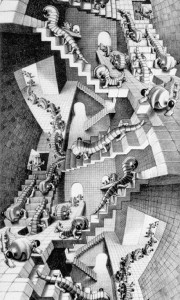
The exposition displays the production of this intellectual genius of iper-magnetism, a master of drawing, showing 130 works of his entire artistic path, on loan from prestigious museums like GAM of Rome, Wolfsoniana Foundation in Genova and from private collections.
Entering in Escher’s world is like immerging ourselves in a synchronic universe, always in motion, changing from bi and three-dimensional spaces, influenced by Gestalt school, the psychological movement devoted to studies of shapes and colors. To understand this vast influences in art, the event also presents comparative works of artists like
Marcel Duchamp, Giorgio de Chirico, Giacomo Balla and Luca Maria Patella.
Escher’s works are displayed in order to give to visitors a unique artistic experience, immerging them in a world of geometry, math, crystallography applied to impossible objects, till Gestalt researches. A style rich of artistic quotes, like flying fishes, dragons and bats of Brueghel and Bosch; sometimes a world barely considered artistic but full of allegory and symbolism.
The exhibition is organized by DART and Arthemisia Group in collaboration with Escher Foundation, sponsored by Roma Capitale and Federico Giudiceandrea Collection. The curator Marco Bussagli has chosen Chiostro del Bramante as location for the event.

